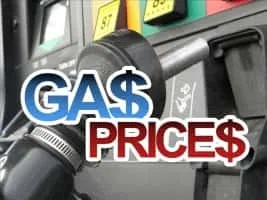(Undated) – We all watch gas price rise and fall, but do you know what drives gas prices? According to GasBuddy.com, the price we pay for a gallon of gas is driven by several factors including oil prices, refining process costs, distribution and transportation expenses, station operation charges, and taxes. The current national average has jumped to $3.14 a gallon, six cents higher than Monday. You can find the full break down of the factors that drive gas prices below.
IT STARTS WITH CRUDE OIL
How do OIL prices impact the gas we pay for? Gasoline, diesel, and many other fuel products are derived from crude oil – so it makes sense that crude oil prices are the biggest factor in determining gas costs. Oil prices go up – gas gets more expensive. Oil prices fall – cheaper fill-ups. Global supply and demand for oil impacts barrel prices, and when demand is high or supply tightens, the price per barrel rises.
From there, it gets more complicated. Oil must be refined into gas and delivered to stations.
THE REFINEMENT PROCESS ADDS COST
Turning crude oil into fuel isn’t cheap. After oil is extracted and traded on energy markets, it needs to be refined and processed into the gasoline we pump into our cars. This happens at refineries through processes including distillation, blending and additive mixing. The technology and manpower required makes refining a pricey endeavor. Operational expenses, equipment upkeep, transportation – it all gets factored in to the price we end up paying at the pump.
DISTRIBUTION AND MARKETING DRIVES UP THE PRICE
Getting gas to the pump takes time and money, too. Once refined, gas needs to be distributed to stations through pipelines and tankers. Distribution logistics and transportation costs are bundled into retail fuel prices. But wait, there’s more! At the pump, gas prices reflect state fuel taxes, credit card transaction fees, costs of running the station, branding royalties, regional environmental policies – the list goes on. Whew!
THE TAKEAWAY AT THE PUMP
Filling up when prices fluctuate can be challenging. Gas prices are comprised of oil prices, refining process costs, distribution and transportation expenses, station operation charges and taxes. With such an intricate calculation, it’s no wonder we see fluctuation at the pump! But arming yourself with the inside scoop helps take some of the sting out of gassing up during times of rising or volatile fuel costs.
